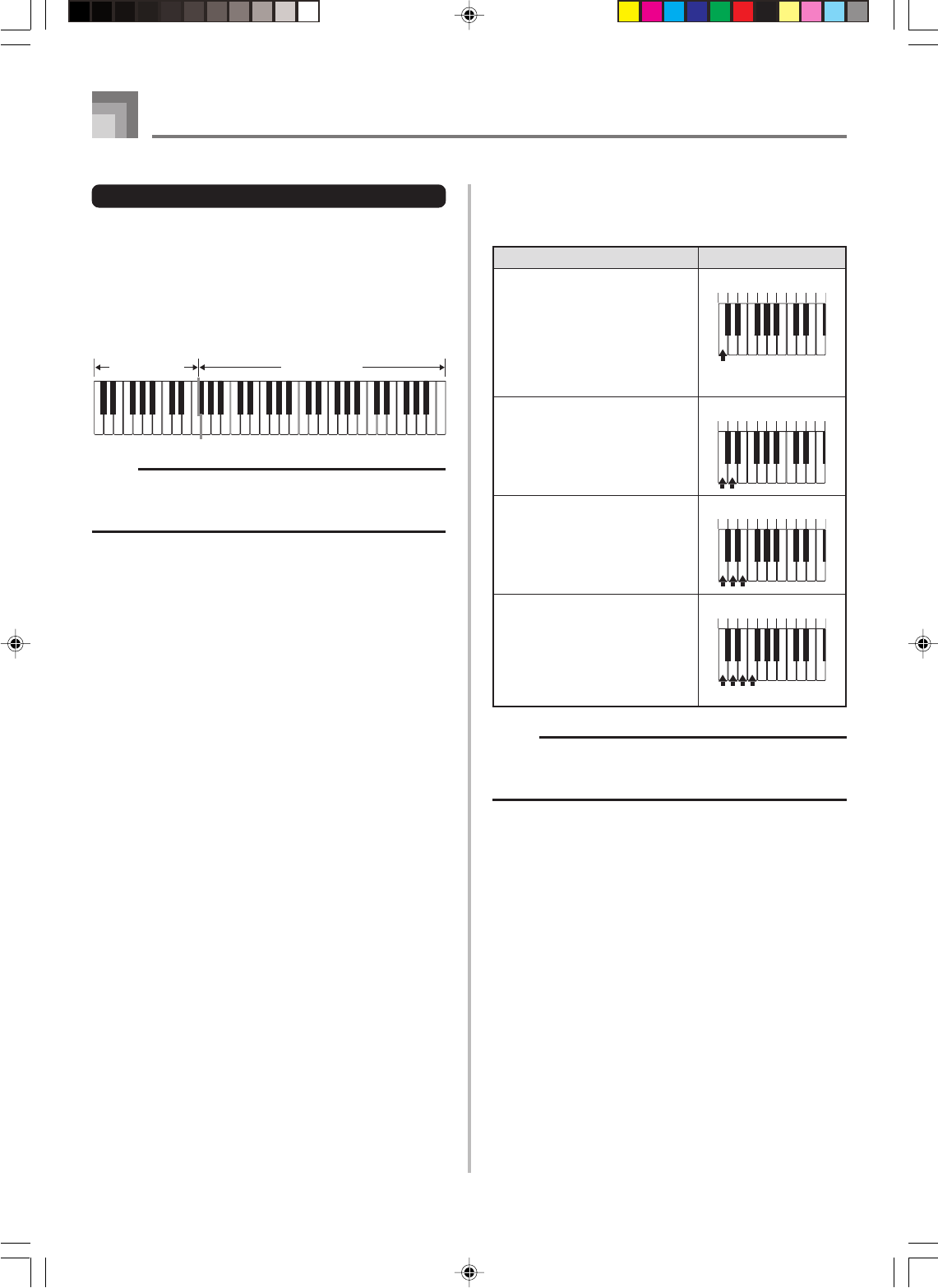
E-36
CASIO CHORD
This method of chord play makes it possible for anyone to
easily play chords, regardless of previous musical knowledge
and experience. The following describes the CASIO CHORD
“Accompaniment keyboard” and “Melody keyboard”, and
tells you how to play CASIO CHORDs.
CASIO CHORD Accompaniment Keyboard and Melody
Keyboard
Melody keyboard
Accompaniment
keyboard
NOTE
• The accompaniment keyboard can be used for playing
chords only. No sound will be produced if you try playing
single melody notes on the accompaniment keyboard.
Example
C Major (C)
C minor (Cm)
C seventh (C7)
C minor seventh (Cm7)
Chord Types
Major chords
Major chord names are marked
above the keys of the
accompaniment keyboard. Note that
the chord produced when you press
an accompaniment keyboard does
not change octave, regardless of
which key you use to play it.
Minor chords (m)
To play a minor chord, keep the
major chord key depressed and
press any other accompaniment
keyboard key located to the right of
the major chord key.
Seventh chords (7)
To play a seventh chord, keep the
major chord key depressed and
press any other two accompaniment
keyboard keys located to the right
of the major chord key.
Minor seventh chords (m7)
To play a minor seventh chord, keep
the major chord key depressed and
press any other three
accompaniment keyboard keys
located to the right of the major
chord key.
CDEFGABCDEF
CDEFGABCDEF
CDEFGABCDEF
CDEFGABCDEF
NOTE
• It makes no difference whether you press black or white
keys to the right of a major chord key when playing minor
and seventh chords.
Auto Accompaniment
Chord Types
CASIO CHORD accompaniment lets you play four types of
chords with minimal fingering.
704A-E-038A
CTK591_e_32-40.p65 03.10.7, 4:27 PM36


















